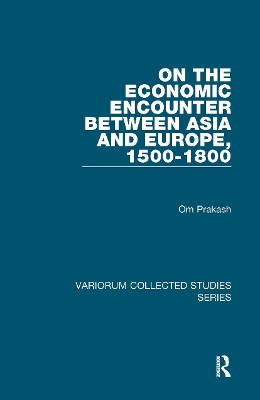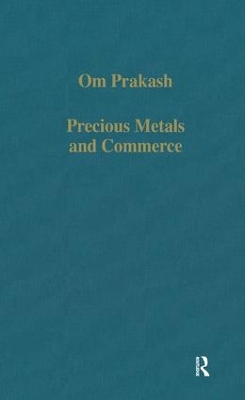Variorum Collected Studies
2 total works
On the Economic Encounter Between Asia and Europe, 1500-1800
by Om Prakash
Published 4 November 2014
The history of the economic contacts between Asia and Europe dates back to at least the early years of the Common Era. But it was only after the overcoming of the transport technology barrier to the growth of trade between the two continents following the discovery by the Portuguese at the end of the 15th century of the all-water route to the East Indies that these contacts became regular and quantitatively significant. The Portuguese were joined at the beginning of the 17th century by the Dutch and the English East India companies. The Europeans operated in the Indian Ocean alongside the Indian and other Asian merchants with no special privileges being available to them. The present collection of essays by Professor Om Prakash first deals with the Indian merchants’ participation in the Indian Ocean trade on the eve of the Europeans’ arrival in the Ocean. The subsequent essays include a discussion of the Portuguese involvement in the Euro-Asian and the Indian Ocean trade. Attention is then turned to the trading activities of the Dutch and the English East India companies. The volume also contains essays on textile manufacturing and trade as well as on coinage and wages in India. The concluding essay deals with trade and politics in the province of Bengal.
Precious metals played a key role in inter-continental trade between Europe and Asia in the early modern period. An assured supply of these metal was indeed a pre-requisite to the procurement of Asian goods such as spices, textiles and raw silk. Once these metals had been imported into Asia, they were converted into the coinage of the country concerned. The 'bullion for goods' pattern of trade had important implications for the level of output, income, employment and prices in the Asian societies. This collection of essays by Professor Om Prakash explores these issues in relation mainly to the Dutch East India Company. Given the scale of its operations, as well as its unique character as the only European corporate group to engage in large scale intra-Asian trade as an integral part of its overall trading strategy, the VOC is a particularly appropriate medium through which to analyse these issues. Les metaux precieux jouerent in rAle clef dans le commerce international entre l'Europe et l'Asie au debut de la periode moderne. La presence d'un stock assure de ces metaux etait, en effet, un facteur necessaire afin de se procurer des produits asiatiques tels les epices, les textiles et la soie grege. Une fois importes en Asie, ces metaux etaient convertis dans le monnaie du pays concerne. La structure commerciale du bullion for goods avait des implications importantes en ce qui concernait le niveau de production, l'emploi et les prix au sein des societes asiatiques. Cette collestion d'essais du professeur Om Prakash explore ces questions en relation plus particulierement avec la conpagnie hollandaise d'Inde Orientale. Etant donnee l'envergure de ses operations, ainsi que son caractere unique en tant que seule corporation europeenne engagee dans un commerciale, le VOC est un particulierement bon exemple A travers lequel analyser ces questions.

